Top total solar eclipses to look out for over the next decade
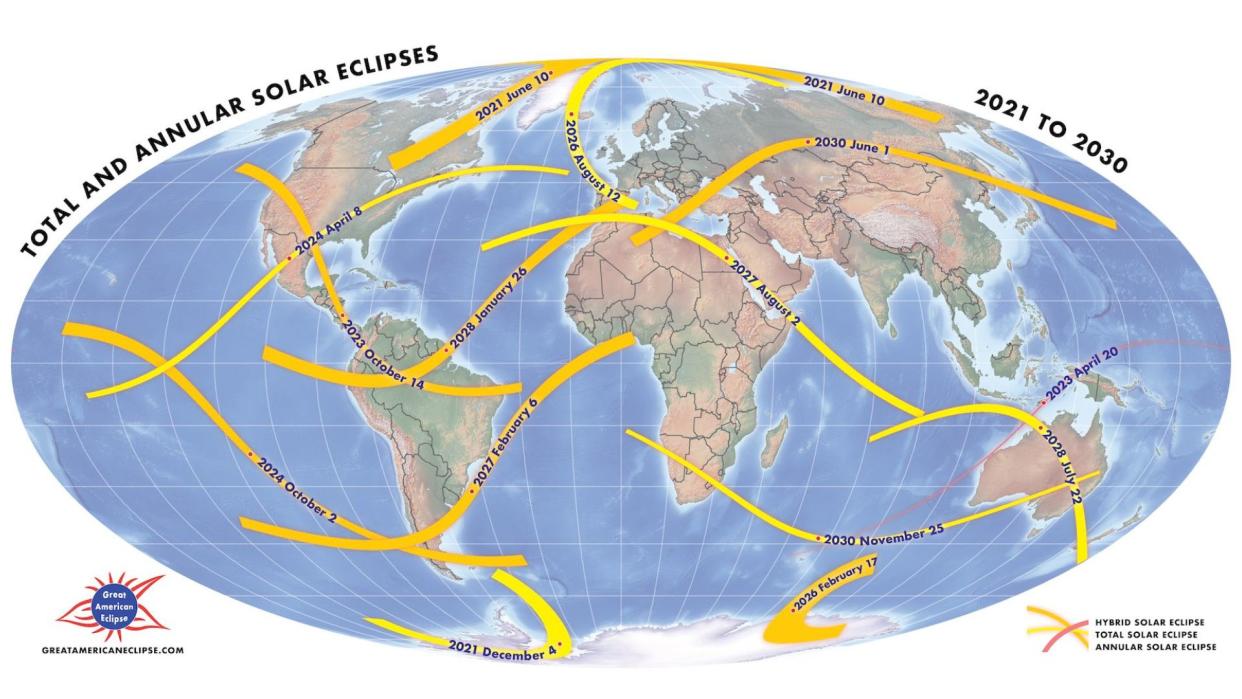
With the April 8 total solar eclipse over, North America has exactly eight years, 11 months and 22 days to wait until its next one. Although total solar eclipses occur in the same location only every 375 years or so, they are not rare. In fact, they happen on our planet about once every 18 months, on average.
In the next decade, seven total solar eclipses will occur on Earth, plunging countries as diverse as Australia, Egypt, Spain and Sudan under the central shadow of the moon. The first of these will be on Aug. 12, 2026, and the last will be on March 20, 2034, with maximum durations of totality ranging from 1 minute, 8 seconds to 6 minutes, 23 seconds.
Here are the important details about where, when and how to experience a total solar eclipse in the next decade.
1. Total solar eclipse of 2026

Total solar eclipse of 2026
When: Wednesday, Aug. 12, 2026
Where: Russia, Greenland, Iceland and Spain
Maximum duration of totality: 2 minutes, 18 seconds
Europe's first total solar eclipse for 27 years will coincide with the peak of the annual Perseid meteor shower. The path of totality will pass over Greenland, western Iceland and northern Spain. The place to experience maximum totality will be on a cruise ship off the coast of Reykjavik, Iceland. The chances of a clear sky are much higher in northern Spain, but the eclipse will be much lower, so sight lines will be key. From the Spanish island of Mallorca, it will even be possible to see a "sunset totality" featuring a golden corona (as long as there are clear skies).
2. Total solar eclipse of 2027
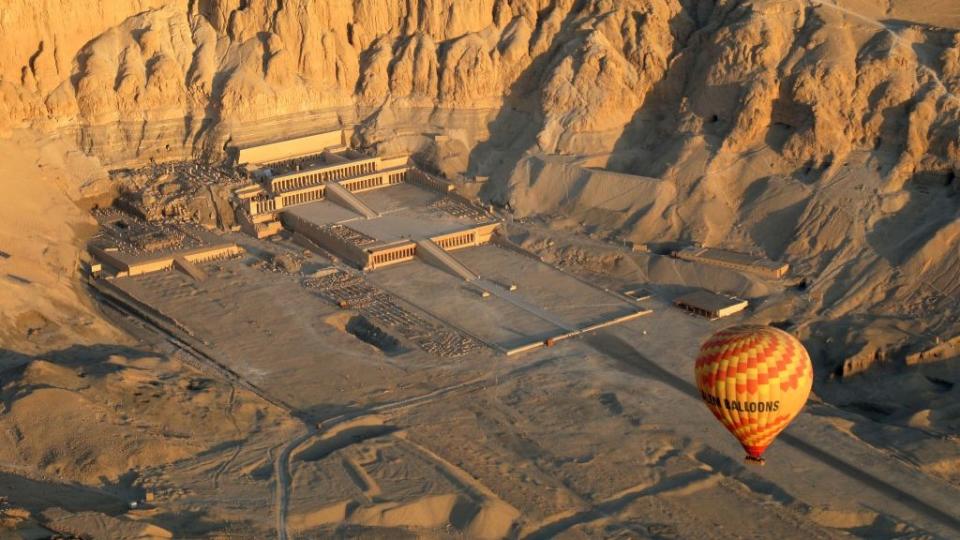
Total solar eclipse of 2027
When: Monday, Aug. 2, 2027
Where: Spain, Gibraltar, Morocco, Algeria, Tunisia, Libya, Egypt, Sudan, Saudi Arabia, Yemen, Somalia and British Indian Ocean Territory
Maximum duration of totality: 6 minutes, 23 seconds
Saros 136 is our era's preeminent family of total solar eclipses. It repeats every 18 years, 11 days and eight hours. The next one is on Aug. 2, 2027, with Luxor, Egypt, destined for a clear view of 6 minutes, 23 seconds of totality. Other options include southern Spain; Gibraltar; Tangier, Morocco; Tunisia's Kerkennah Islands; and Jeddah and Mecca, Saudi Arabia.
However, all eyes will be on Luxor, where an eclipsed sun will be visible from the Valley of the Kings, Karnak, Luxor Temple, the Colossi of Memnon and the Temple of Hatshepsut. A whopping 89 million people will experience totality in 2027 — far more than witnessed the 2024 total solar eclipse in North America.
3. Total solar eclipse of 2028

Total solar eclipse of 2028
When: Saturday, July 22, 2028
Where: Christmas Island, Cocos Islands, Australia and New Zealand
Maximum duration of totality: 5 minutes, 10 seconds
This solar eclipse — the second of five in 15 years for Australia — will be visible from remote locations such as the Bungle Bungles and Karlu Karlu (Devils Marbles) in Western Australia and the Northern Territory, respectively, as well as Dubbo, the Blue Mountains and Sydney, where observers will get to witness 3 minutes, 48 seconds of totality. The South Island of New Zealand — including Milford Sound, Queenstown and Dunedin — will also experience totality close to sunset.
4. Total solar eclipse of 2030
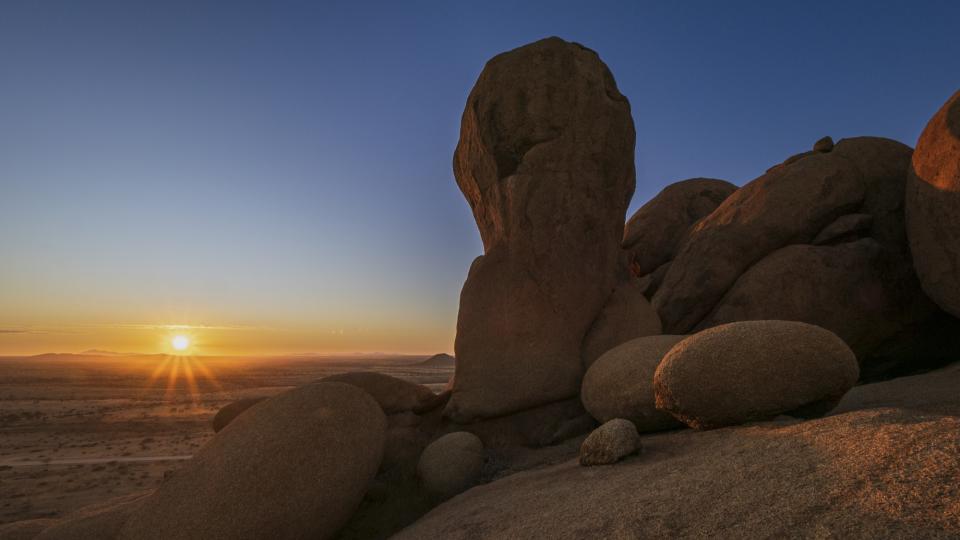
Total solar eclipse of 2030
When: Monday, Nov. 25, 2030
Where: Namibia, Botswana, South Africa, Lesotho and Australia
Maximum duration of totality: 3 minutes, 44 seconds
This eclipse will occur mostly at sea, but it will cross almost 11 million people on two continents. Totality will occur shortly after sunrise from Namibia's Skeleton Coast before moving across Botswana to Durban on the east coast of South Africa. The path of totality will then stretch across a remote part of the Indian Ocean before a low-setting eclipsed sunset is seen from South Australia and the outback of New South Wales and Queensland. It's the perfect opportunity to explore Namibia or take part in a remote safari adventure in Botswana.
5. Hybrid total-annular solar eclipse of 2031
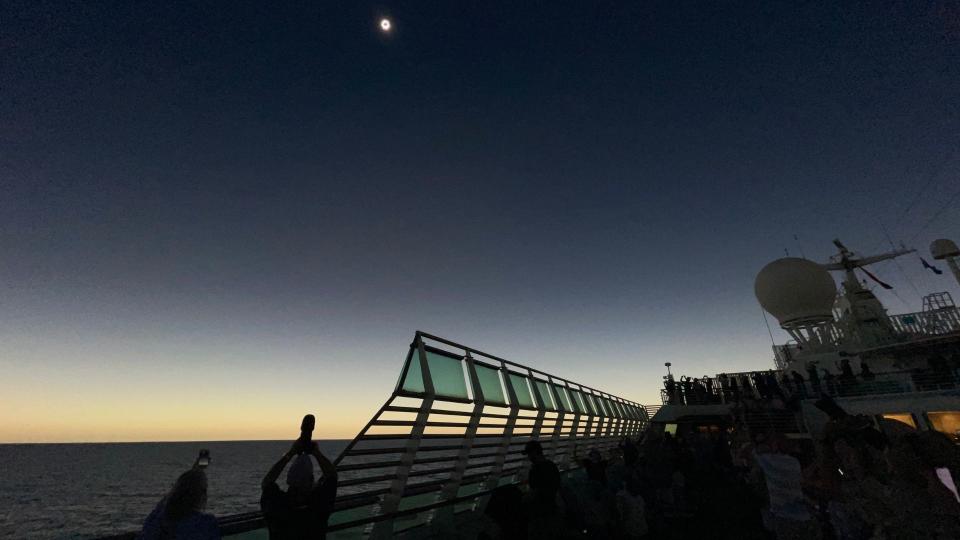
Hybrid total-annular solar eclipse of 2031
When: Friday, Nov. 14, 2031
Where: Cruise ship from Hawaii
Maximum duration of totality: 1 minute, 8 seconds
For many people, this remote and short eclipse might not be worth the effort. After all, a brief totality during this very remote eclipse will be visible only from inside a narrow path in the North Pacific Ocean, making a cruise ship from Hawaii the most likely way to experience it.
But this is the most dramatic type of eclipse — a hybrid. A hybrid eclipse, which occurs only seven times in the 21st century, combines an annular (or "ring of fire") solar eclipse and a total solar eclipse. However, the short duration and small shadow are crucial, with informed eclipse chasers destined to enjoy an extended display of Baily's beads and a lingering diamond ring before and after totality. A "ring of fire" will be visible from the coast of Panama for 25 seconds.
6. Total solar eclipse of 2033
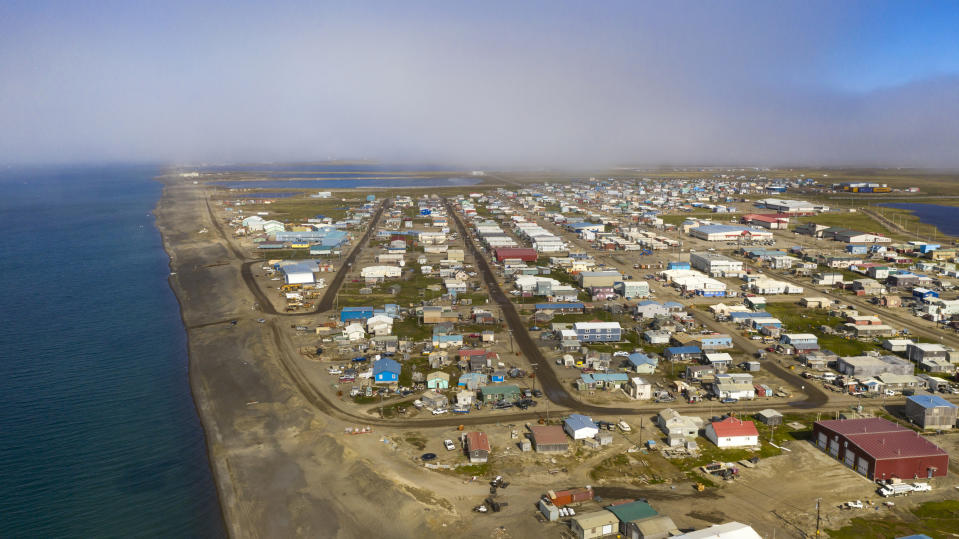
Total solar eclipse of 2033
When: Wednesday, March 30, 2033
Where: Russia and the U.S. (Alaska)
Maximum duration of totality: 2 minutes, 37 seconds
This is the next total solar eclipse for North America. Because it occurs close to the spring equinox, it will be a great opportunity to explore Alaska during peak northern lights viewing season. An eclipsed sun as low as 8 degrees above the eastern horizon will be seen from locations such as Utqiagvik (Barrow), Sagavanirktok (Prudhoe Bay), Kotzebue and Nome.
7. Total solar eclipse of 2034

Total solar eclipse of 2034
When: Monday, March 20, 2034
Where: Benin, Nigeria, Cameroon, Chad, Sudan, Egypt, Saudi Arabia, Kuwait, Iran, Afghanistan, Pakistan, India and China
Maximum duration of totality: 4 minutes, 9 seconds
If you want a total solar eclipse to take you off the beaten path, this eclipse will suit you. The path of totality will envelope 109 million people in 13 countries in Central Africa and South Asia. Chief viewing locations will include the Red Sea Coast, in Egypt; the UNESCO World Heritage site of Persepolis, in Iran; and Leh, in the Indian Himalayas.
Additional resources
You can read all about these eclipses in the book "When Is the Next Eclipse? A traveler's guide to total solar eclipses 2024-2034," by Jamie Carter, and on his website, WhenIsTheNextEclipse.com. Other useful resources for eclipse chasers include Eclipse Wise, a website dedicated to predictions of eclipses; cartographer Michael Zeiler's GreatAmericanEclipse.com and Atlas of Solar Eclipses 2020-2045; climate and weather predictions by meteorologist Jay Anderson on Eclipsophile.com; and Xavier Jubier's Interactive Google Maps.

